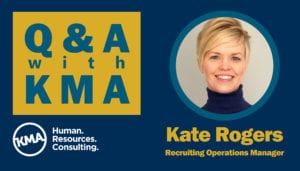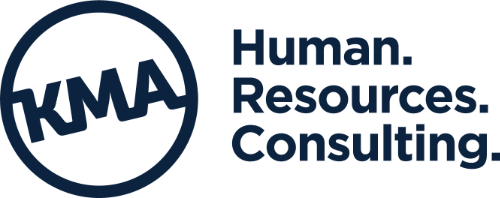
We recently sat down with
Kate Rogers, Recruiting
Operations Manager, to ask about
the challenges of today’s tight labor market, and for her insights
and advice for employers who are struggling to hire.
Q: Employers everywhere are really struggling to fill open positions right now. What are you seeing, and what are some of the factors that are contributing to the tight labor market?
KR: There are several factors at play, and we have the perfect storm of a shrinking labor force combined with an economy that is ramping back up after the pandemic. The US added 850,000 jobs in June, which was better than expected, and the unemployment rate remains pretty steady at 5.9% (DOL).
Some of the reasons for the difficulty in filling positions include an aging workforce here in Maine and throughout much of New England, and the number of working-age people declining nationally. We’re also seeing a trend where workers are deciding to retire early rather than go back to their pre-pandemic jobs, enabled by increasing home values as well as stock market gains, and inspired by a re-thinking of work-life priorities during the pandemic.
This is impacting certain sectors in a particularly critical way; in hospitality and education, for example, many are leaving the industry altogether due to the stress and instability caused by COVID over the past year.
Another problem is that many workers experienced childcare issues – especially with remote learning – that prevented them from working. Women often handle childcare responsibilities, causing them to drop out of the labor force in what’s being called a She-cession.
On top of all of this, there’s the reluctance for some workers to come back to work due to fears of the coronavirus, or employer vaccination, mask, and return-to-work policies they may object to.
Q: That’s a long list of things obstructing employers who are trying to hire. What recommendations do you have for filling open positions?
KR: In such a tight labor market, candidates have all the leverage, and we’re seeing that employers are offering a range of perks and incentives, even for low-wage jobs, like higher pay, medical benefits, signing bonuses, referral programs, and paid time off.
Other things to consider offering are childcare assistance, help with college debt, or continuing education assistance.
Flexible schedules are another way companies can make themselves more attractive to candidates. Some organizations are testing out a four-day workweek and seeing satisfaction and productivity improve. Iceland was recently in the news for such a trial, with overwhelmingly positive results in well-being and productivity, so that’s an interesting trend to watch.
Another thing employers can do is speed up and streamline the whole recruiting process if they want to bring top talent on board. The strongest candidates are not going to be on the job market for long, so employers should look at tightening up their decision-making time and reduce the rounds of interviews for candidates. Anything you can do to remove friction from the process can help.
Q: What else should employers be thinking about now?
KR: This might be a good time to review your compensation structure and determine if you’re paying competitive wages. Things have changed pretty dramatically over the past year or so, and employers need to be sure they’re offering market-rate pay so they can attract new talent and also retain their existing workforce.
Thanks for your insights, Kate!
The hiring challenges facing employers are real but you don’t have to go it alone. KMA has a strong team of recruiters who can provide consulting expertise and expediate the overall recruiting process. We always welcome conversations about how we can help organizations find the best talent – just reach out to us at info@kmahr.com
